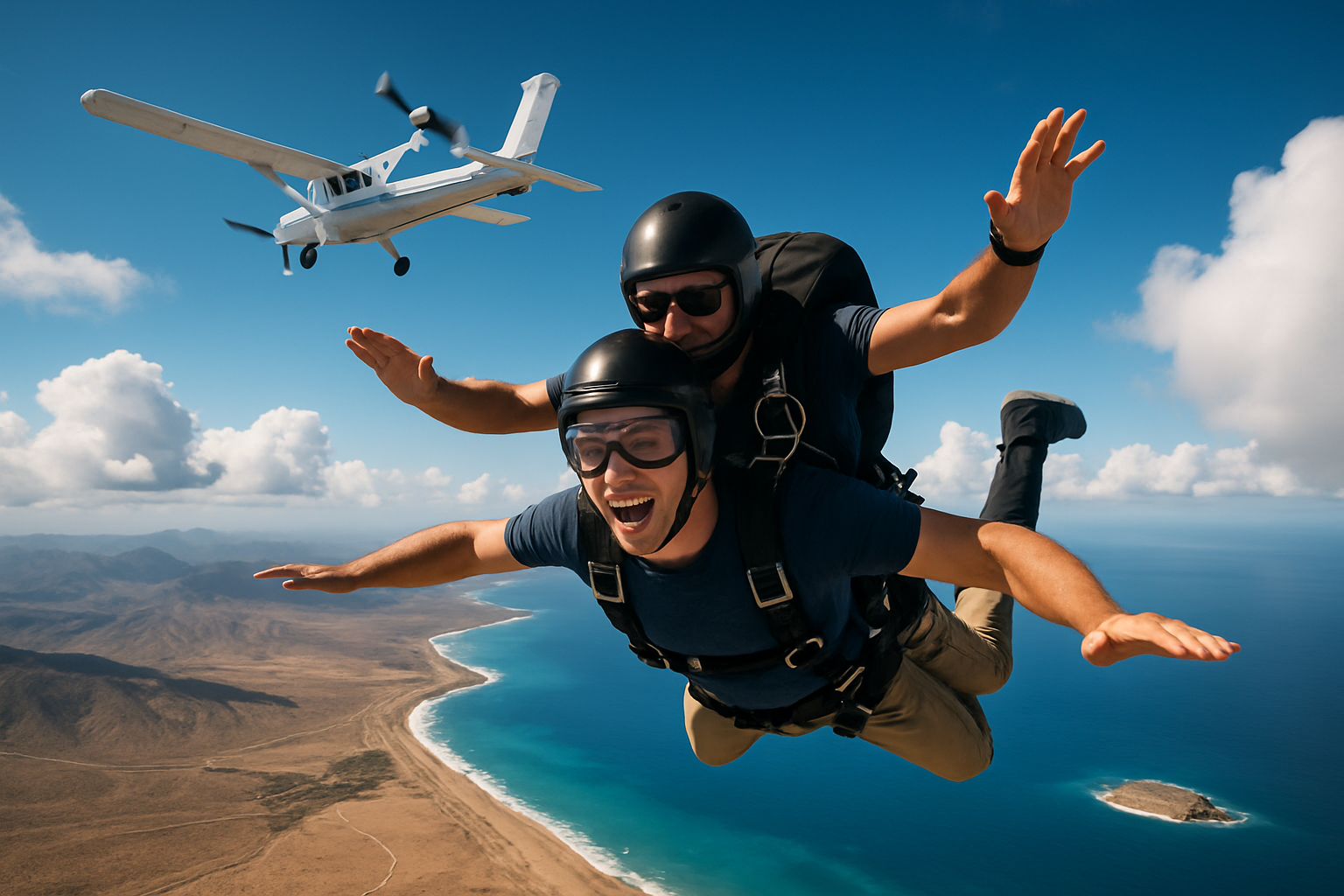Skydiving Tourism: The Ultimate Adrenaline-Fueled Travel Experience
Soaring through the clouds, feeling the rush of wind against your face, and experiencing the world from a breathtaking new perspective – welcome to the exhilarating realm of skydiving tourism. This thrilling niche in the travel industry has been gaining momentum, attracting adventure seekers and bucket-list chasers from around the globe. As more travelers yearn for unique, heart-pounding experiences, skydiving destinations are emerging as must-visit locales for those craving the ultimate adrenaline rush.

As safety measures improved and equipment became more sophisticated, skydiving slowly transitioned from an extreme sport for daredevils to an accessible activity for thrill-seeking tourists. The introduction of tandem skydiving in the 1980s was a game-changer, allowing novices to experience freefall without extensive training.
Top Skydiving Destinations Around the World
Today, skydiving hotspots have sprung up across the globe, each offering unique views and experiences. In the United States, locations like Moab, Utah, provide jumpers with stunning desert landscapes and red rock formations. New Zealand’s Queenstown, often dubbed the adventure capital of the world, offers breathtaking views of the Southern Alps and crystal-clear lakes.
For those seeking tropical vistas, skydiving over the Great Barrier Reef in Australia or the beaches of Hawaii presents unparalleled aerial views of azure waters and lush islands. In Europe, the Swiss Alps provide a majestic backdrop for adrenaline junkies, while Dubai offers the unique experience of landing on the man-made Palm Jumeirah island.
The Economic Impact of Skydiving Tourism
The rise of skydiving tourism has had a significant economic impact on many regions. Small towns with ideal jumping conditions have seen an influx of visitors, boosting local economies through increased demand for accommodations, dining, and other services. Skydiving centers often employ a range of professionals, from instructors and pilots to maintenance crews and support staff, creating job opportunities in various sectors.
Moreover, the industry has spawned related businesses such as specialized travel agencies, equipment manufacturers, and extreme sports media companies. The economic ripple effect extends to local businesses that cater to the needs of skydivers and spectators alike.
Safety Measures and Regulations in Skydiving Tourism
As the popularity of skydiving tourism grows, so does the emphasis on safety. Reputable skydiving operations adhere to strict regulations set by national and international governing bodies. These regulations cover everything from equipment maintenance to instructor qualifications and jump procedures.
Modern skydiving equipment includes sophisticated safety features such as automatic activation devices (AADs) that deploy the reserve parachute if the main chute fails to open. Rigorous training programs for instructors and regular safety audits of skydiving centers help maintain high standards across the industry.
Tourists considering skydiving should always research the credentials of their chosen operator and ensure they meet all safety requirements. It’s also crucial for participants to honestly disclose any medical conditions that might affect their ability to jump safely.
The Psychology of Extreme Tourism
The appeal of skydiving tourism taps into a fundamental aspect of human psychology – the desire for novel and intense experiences. Psychologists have long studied the motivations behind extreme sports participation, finding that it often relates to sensation-seeking behavior and the pursuit of flow states.
For many tourists, skydiving represents more than just an adrenaline rush; it’s a transformative experience that pushes personal boundaries and creates lasting memories. The sense of accomplishment and euphoria after completing a jump can have positive effects on self-esteem and overall well-being.
However, it’s important to note that not everyone is suited for such intense activities. Responsible skydiving operators often include pre-jump assessments to ensure participants are mentally and physically prepared for the experience.
Skydiving Tourism: Essential Tips for First-Time Jumpers
-
Choose a reputable skydiving center with experienced instructors and a strong safety record
-
Book your jump in advance, especially during peak tourist seasons
-
Be prepared for weather-related delays or cancellations
-
Wear comfortable, weather-appropriate clothing and sturdy shoes
-
Listen carefully to all safety instructions and ask questions if anything is unclear
-
Consider purchasing video and photo packages to capture your experience
-
Stay hydrated and avoid alcohol for at least 24 hours before your jump
-
Inform the staff of any medical conditions or concerns before jumping
-
Relax and enjoy the experience – remember, your instructor is there to ensure your safety
The Future of Skydiving Tourism
As technology advances and travel trends evolve, the future of skydiving tourism looks promising. Virtual reality simulations are already being used to prepare first-time jumpers, potentially making the activity more accessible to a wider audience. Innovations in equipment design continue to improve safety and comfort, while new jump sites are being developed in previously unexplored locations.
The integration of skydiving with other forms of adventure tourism, such as base jumping or wingsuit flying, is likely to create even more unique experiences for thrill-seekers. As the industry grows, it will face challenges in balancing increased demand with environmental concerns and local community impacts. However, with responsible management and sustainable practices, skydiving tourism has the potential to continue offering unforgettable experiences to adventurous travelers for years to come.





